By Lindsay Trottier, a PhD student at McGill University
In November 2023, I was afforded the opportunity to attend the 17th International Symposium on Aquatic Plants held in Antwerp, Belgium, which ran from November 13-17. The goal of the conference is to bring together individuals and organizations from around the world to discuss topics relating to the science and management of aquatic vegetation. Approximately 120 individuals came from across Europe and the United Kingdom, Canada and the United States, Japan, China, South Africa, and New Zealand to participate in the conference.
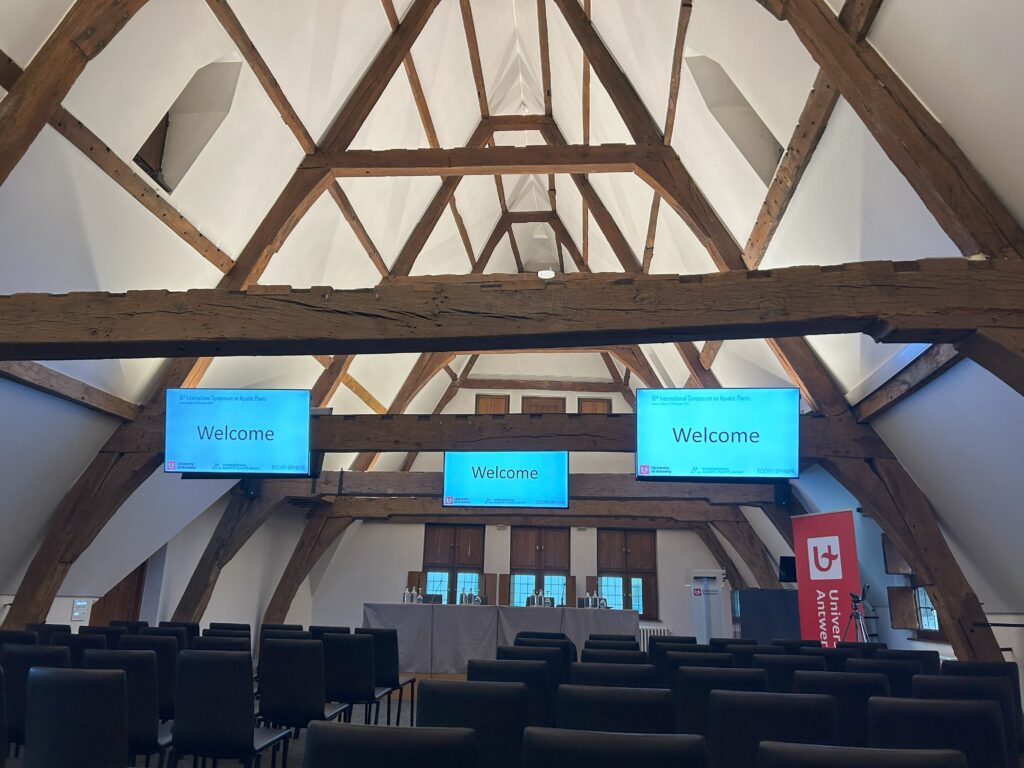
This conference was organized by Dr. Jonas Schoelnyk and was held at the University of Antwerp’s historic Hof van Liere building. The Hof van Liere building was constructed in 1516 as a residence for Antwerp’s mayor at the time, Aert van Liere. The building features a central courtyard which, in November, shows off colourful fall foliage!
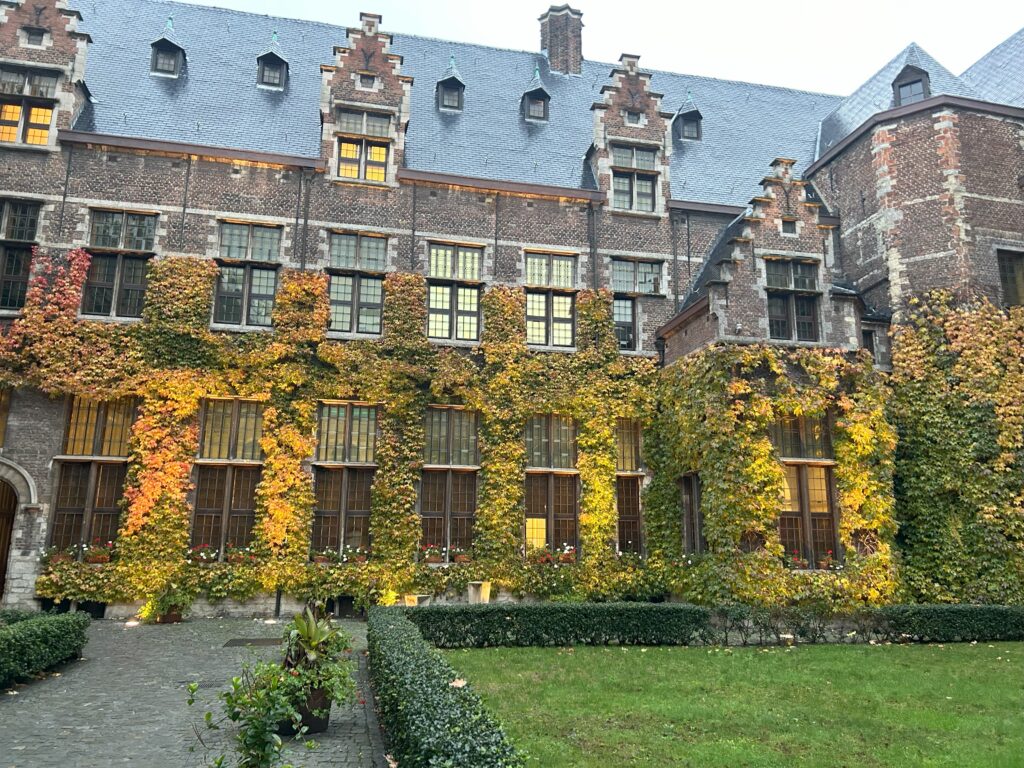
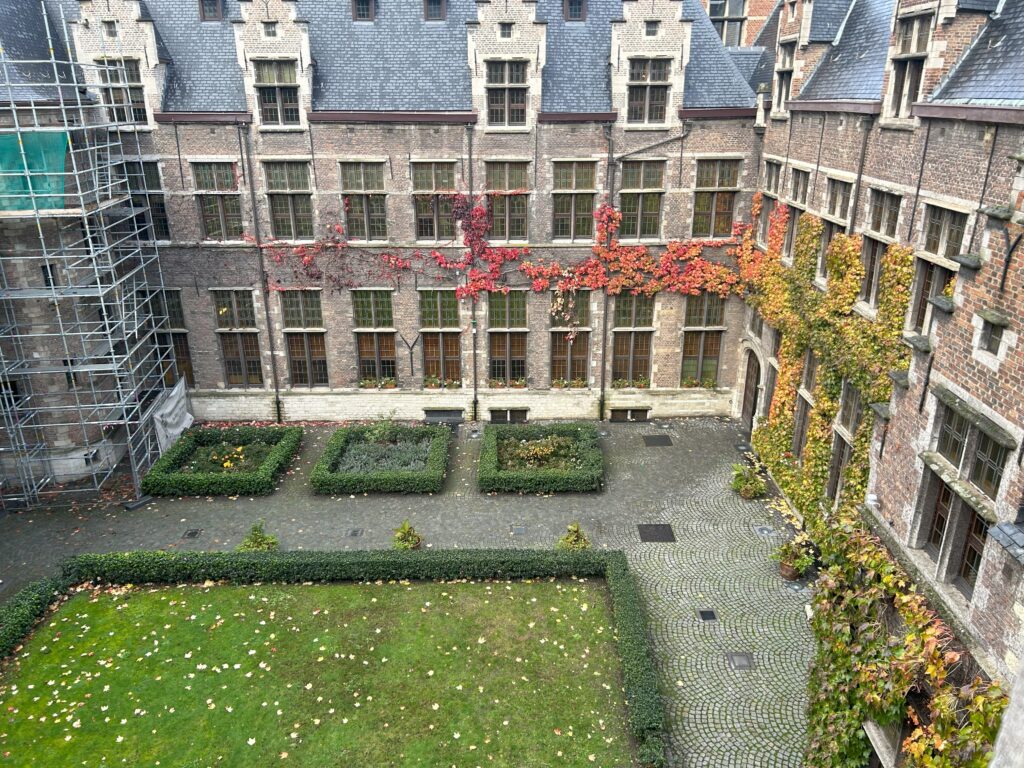
The conference began with a lunch on Monday, November 13, and was followed by introductions by the conference organizer. Then, we heard a keynote presentation from Dr. Ludwig Triest of Vrije Universiteit Brussel (Free University of Brussels, Belgium) summarizing his research on the dispersal history and genetic connectivity of aquatic plants over the past 30 years. Following this keynote presentation, conference sessions began and included the beginning of a week-long demonstration showing how the Chinese mitten crab (Eriocheir sinensis) alters aquatic plant communities. The Chinese mitten crab is an alien invasive species in Belgium and other parts of Europe (and Canada!) and causes dramatic changes to aquatic ecosystems, such as the near eradication of submerged aquatic plants via herbivory and burrowing behaviour. To demonstrate the impacts of these crabs, a large fish tank was set up in the conference hall containing a few submerged aquatic plants and two live Chinese mitten crabs. Over the course of the week conference attendees could check in on the mini-ecosystem and watch as the crabs clipped, uprooted, and ate the aquatic plants. The first day of the conference ended with an opening reception at the Klooster van de Grauwzusters (Convent of the Grey Sisters), which was built between 1886 and 1890. The opening reception provided an opportunity for casual networking over wine, beer (including two house beers brewed by University of Antwerp alumni!), and hors d’oeuvres.
Tuesday, November 14 and Wednesday, November 15 were both jam-packed days of conference talks covering a variety of topics including: the macroecology of aquatic plants in fresh waters, plant-animal interactions in aquatic plant beds, genetic diversity and structure of aquatic plants, causes and patterns of aquatic plant decline and recovery, the impacts of herbicides on aquatic plants, and the use of macrophytes as nature-base solutions in urban environments.
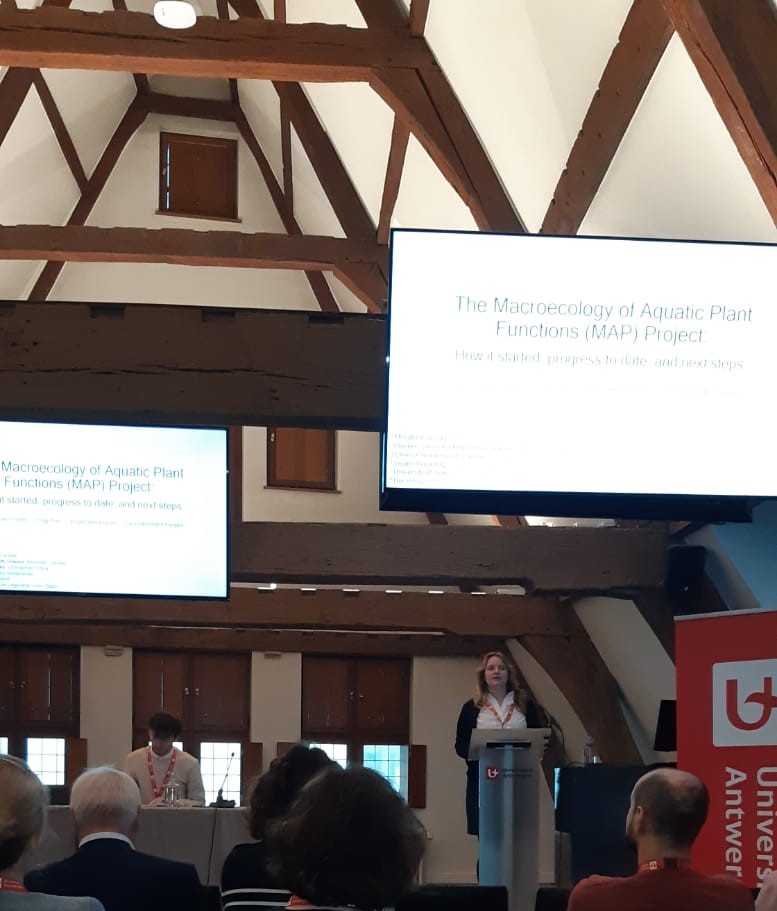
On Tuesday morning, I gave an oral presentation on the Macroecology of Aquatic Plant Functions (MAP) Project (www.maptraits.com). Through this project, I am developing a global database of aquatic plant functional traits and will apply the database to examine biogeographical patterns in the form and function of aquatic plants. My presentation provided a summary of how the project began, the progress made to date, and next steps for the project. I also used this opportunity to identify individuals and organizations attending the conference that would be interested in collaborating on the project. This conference was the perfect platform for me to meet existing collaborators and has helped me connect with more than 10 new collaborators!
On Wednesday morning, Dr. Julie Coetzee of Rhodes University in South Africa gave a keynote presentation on biological control methods for invasive aquatic plants. In particular, her research focussed on controlling massive floating mats of water hyacinth (Pontederia crassipes) in Hartbeespoort Dam in South Africa by releasing colonies of the water hyacinth planthopper (Megamelus scutellaris). This insect causes immense damage to water hyacinth through feeding and is host-specific, meaning that it has very limited impacts on other species of plants.
On Wednesday evening, we attended a seated conference dinner at the Horta Grand Café, in a beautiful art nouveau building. The building is named after Victor Horta, a Belgian architect known as one of the founders of art nouveau. While the Horta Grand Café wasn’t designed by Victor Horta himself, it was constructed using original iron rafters that were used to build the Maison du Peuple, an influential public building in Brussels designed by Victor Horta in the 1890s, but that was demolished in 1965 despite protests from other architects around the world.
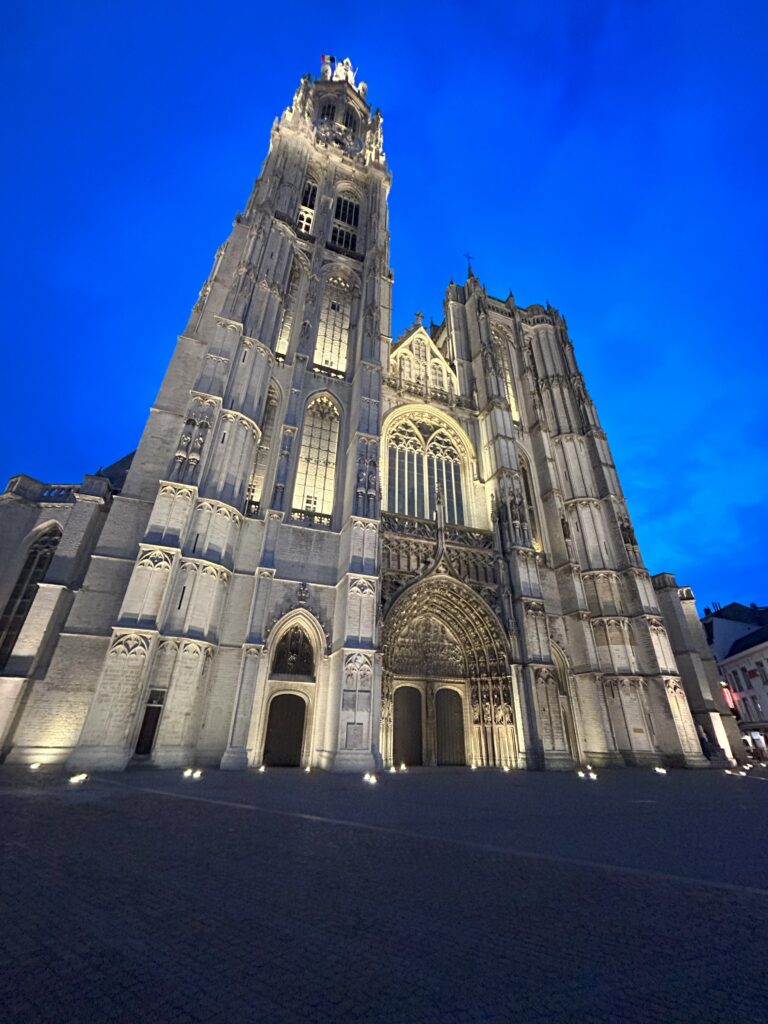
A full day of excursions wasere planned for conference participants on Thursday, November 16. I thought this was a great way for attendees to interact with one another in a new setting, while being given the opportunity to see some of the exciting landmarks and facilities in Antwerp and in the vicinity. Our day started at 7:30am, where attendees met outside the Cathedral of Our Lady, a Gothic cathedral built between 1352 and 1521.
Another notable feature of this meeting place is the Nello and Patrasche statue situated in front of the Cathedral of Our Lady. Nello and his dog Patrasche are characters from an 1872 book A Dog of Flanders by Marie Louise de la Ramée (Ouida). The story, set in Antwerp, is about an orphaned and homeless boy and his dog who face many hardships, but ultimately make their way to the Cathedral of Our Lady on Christmas Eve to see a famous triptych by Peter Paul Rubens. The pair sneak into the church through an open door, eventually falling asleep at the foot of the triptych, never to wake up again as they both die of hypothermia. Not your typical Christmas story! However, the story gained popularity in many countries in Eastern Asia, particularly in Japan, where it has been adapted into films and anime.
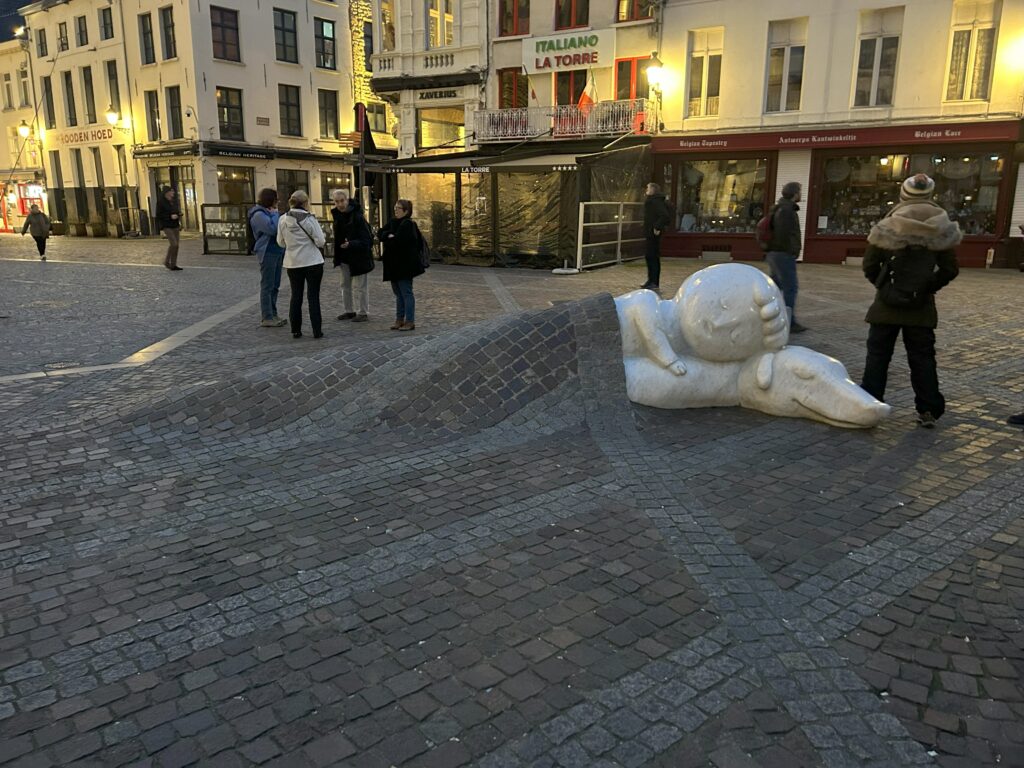
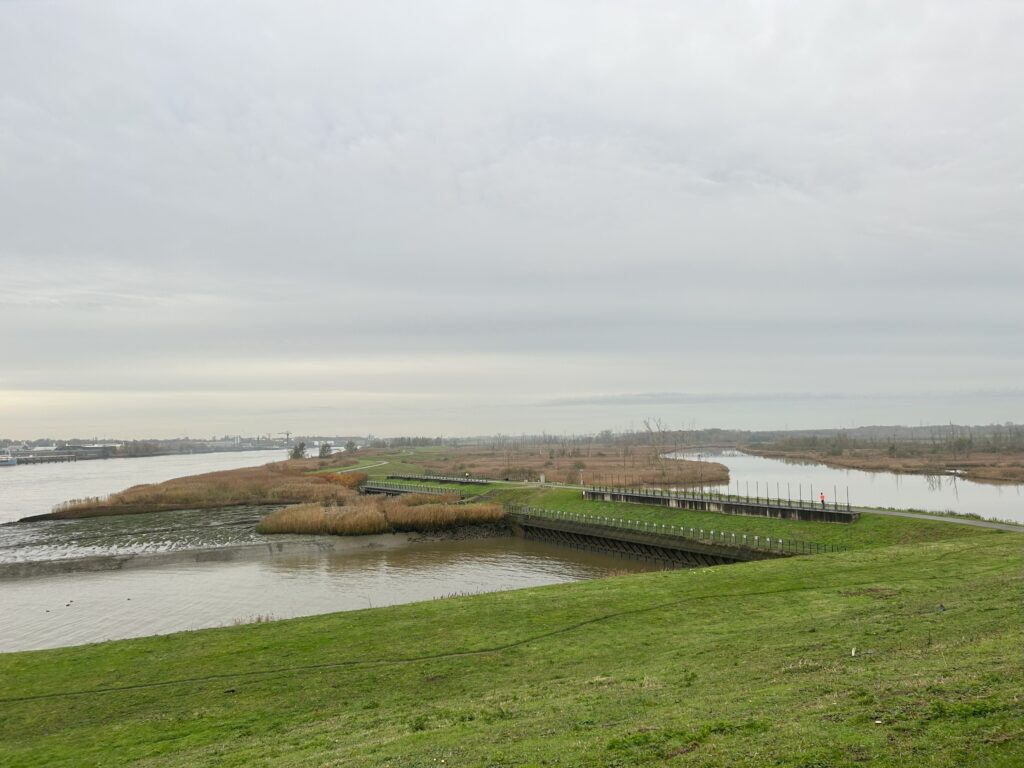
Our first stop was the Kruibeke Controlled Floodplain, which is a controlled flood area completed in 2015 to help mitigate the effects of flooding from the Scheldt Estuary caused by extreme weather events and longer-term impacts caused by climate change, such as sea-level rise. While the area effectively protects the surrounding area from flooding, it also provides new and restored tidal habitats for birds and fish and is a recreational area for residents and visitors alike with paths for biking and hiking, and even includes areas for fishing.Our first stop was the Kruibeke Controlled Floodplain, which is a controlled flood area completed in 2015 to help mitigate the effects of flooding from the Scheldt Estuary caused by extreme weather events and longer-term impacts caused by climate change, such as sea-level rise. While the area effectively protects the surrounding area from flooding, it also provides new and restored tidal habitats for birds and fish and is a recreational area for residents and visitors alike with paths for biking and hiking, and even includes areas for fishing.
Then, we made our way to the Mesodrome at the University of Antwerp, an impressive facility which houses a variety of equipment used for aquatic research projects. This facility includes 16 large experimental ponds (used in mesocosm studies) and a 25 m-long flume that simulates tidal conditions in shoreline habitats.
Next, we were given a guided tour of the collections and greenhouse at the Meise Botanic Garden, which includes one of the largest collections of living plants and an herbarium containing over 4 million specimens!
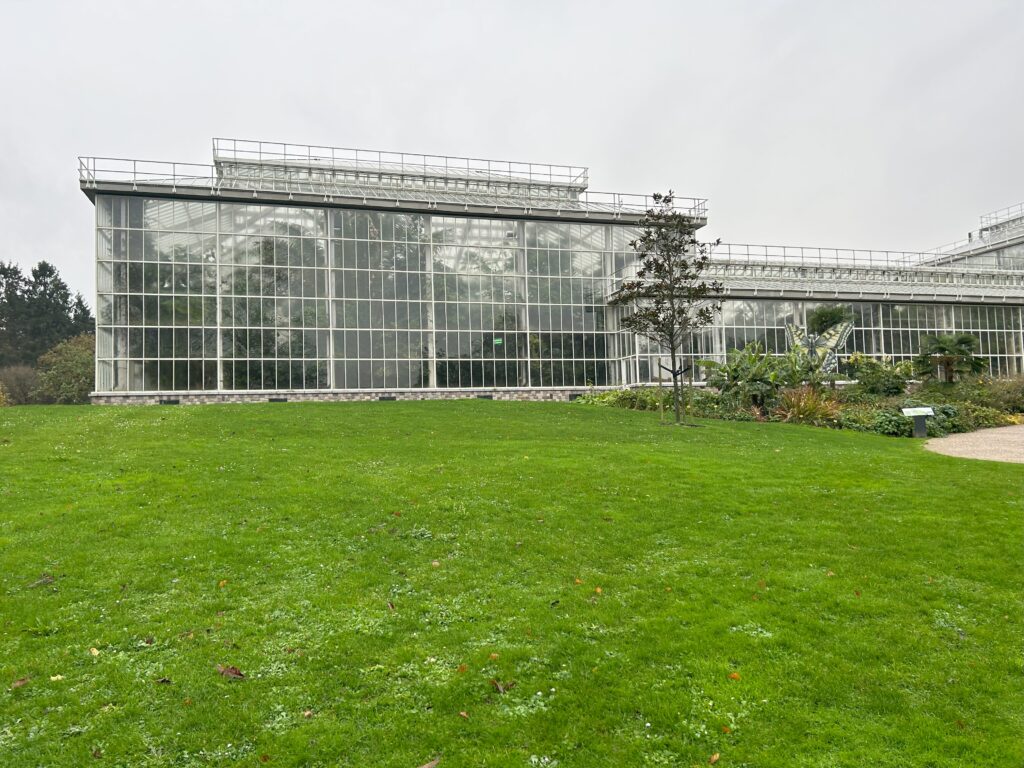
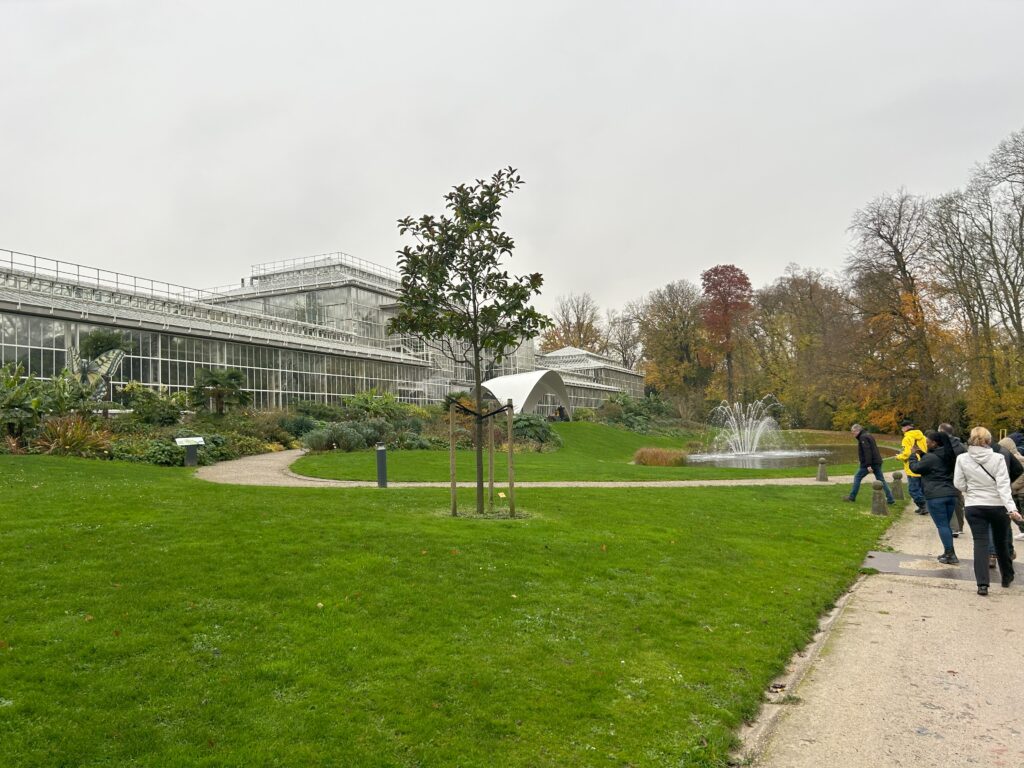
To end the day, we enjoyed an evening tour of the Royal Museum of Fine Arts in Antwerp (KMSKA). The museum is home to art from the 15th to the 20th century and includes paintings by Belgian artists such as Peter Paul Rubens, James Ensor, Henry van de Velde, René Magritte, and Rik Wouters.
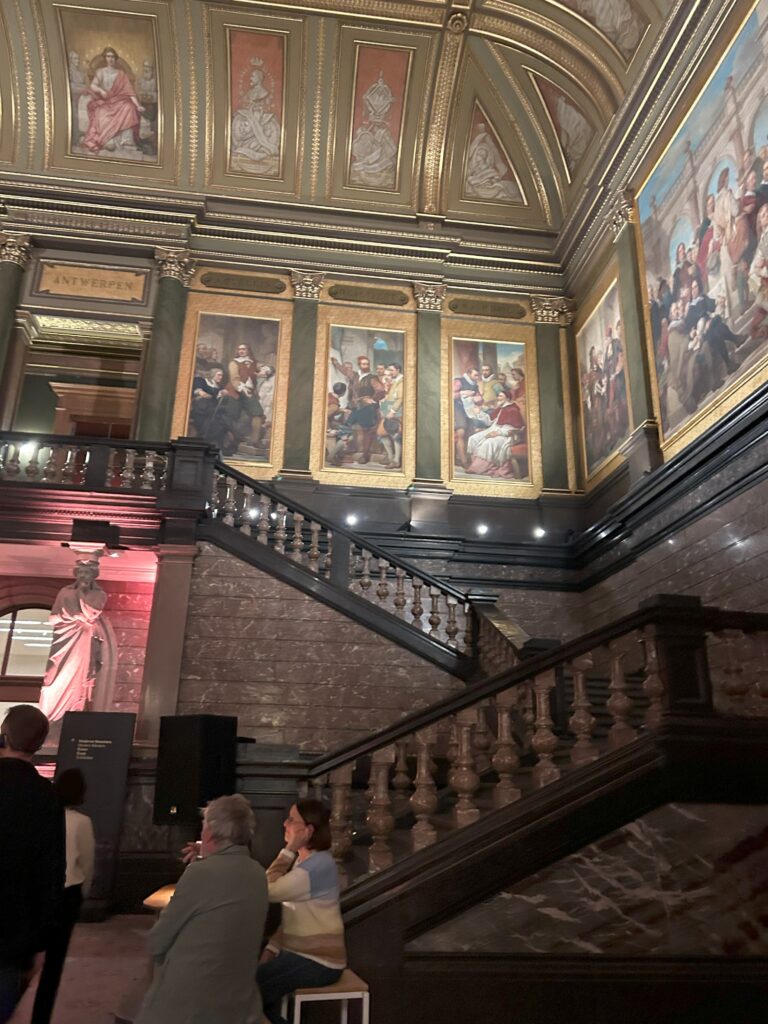
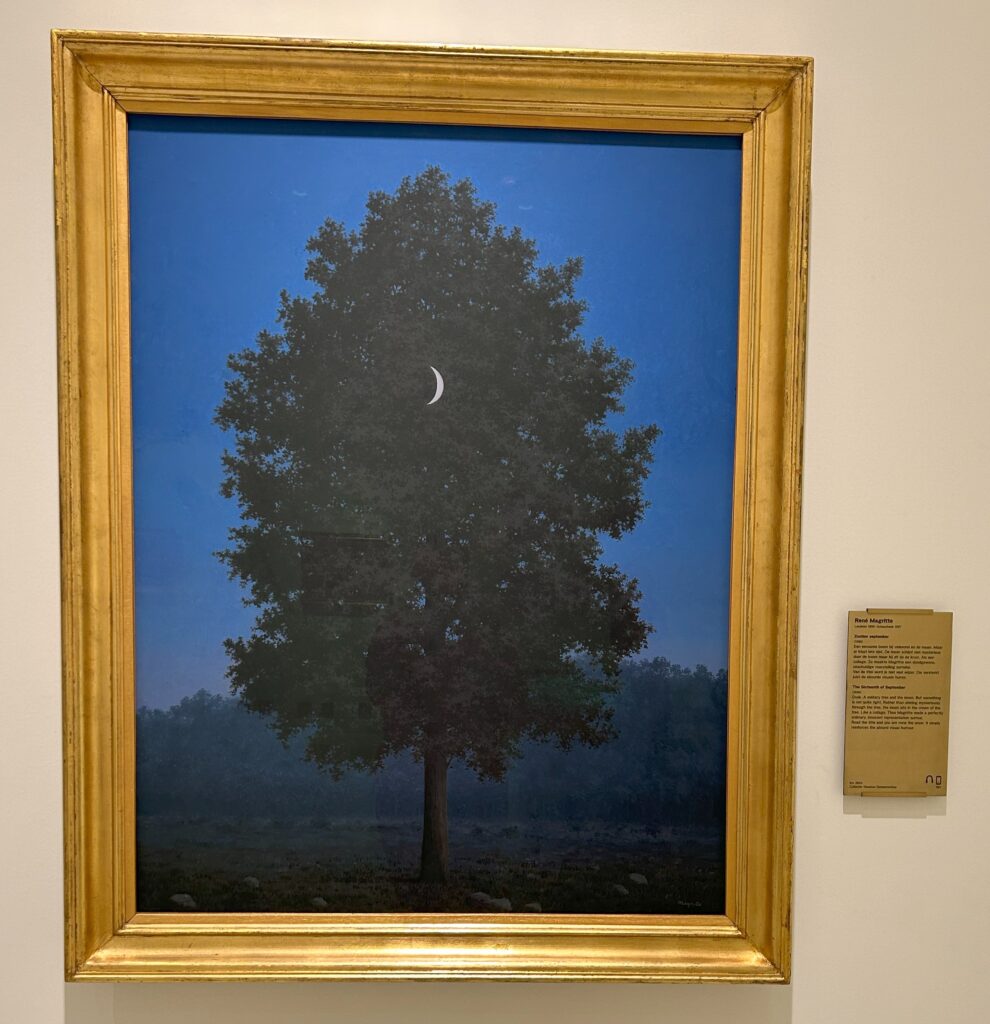
Friday, November 17 was the last day of the conference, and we heard presentations from the last two sessions of the conference. The final sessions were followed by some closing remarks from the conference organizers and the Scientific Committee of the International Aquatic Plants Group. The end of the conference was marked with a final lunch for conference attendees, which provided yet another opportunity for some last-minute networking and to exchange contact information with potential collaborators!
I want to thank the QCBS for providing me with an Excellence Award to help fund my participation and attendance at this conference. I feel incredibly lucky that the 17th International Symposium on Aquatic Plants was the first international conference I attended as a PhD student. The theme of this conference aligns perfectly with my research and was the ideal platform to share my research and goal, and network with others in my field. The conference organizers did an outstanding job at creating a welcoming, engaging, and hospitable environment for all attendees. I look forward to attending the 18th International Symposium on Aquatic Plants in Lisbon, Portugal in 2025!
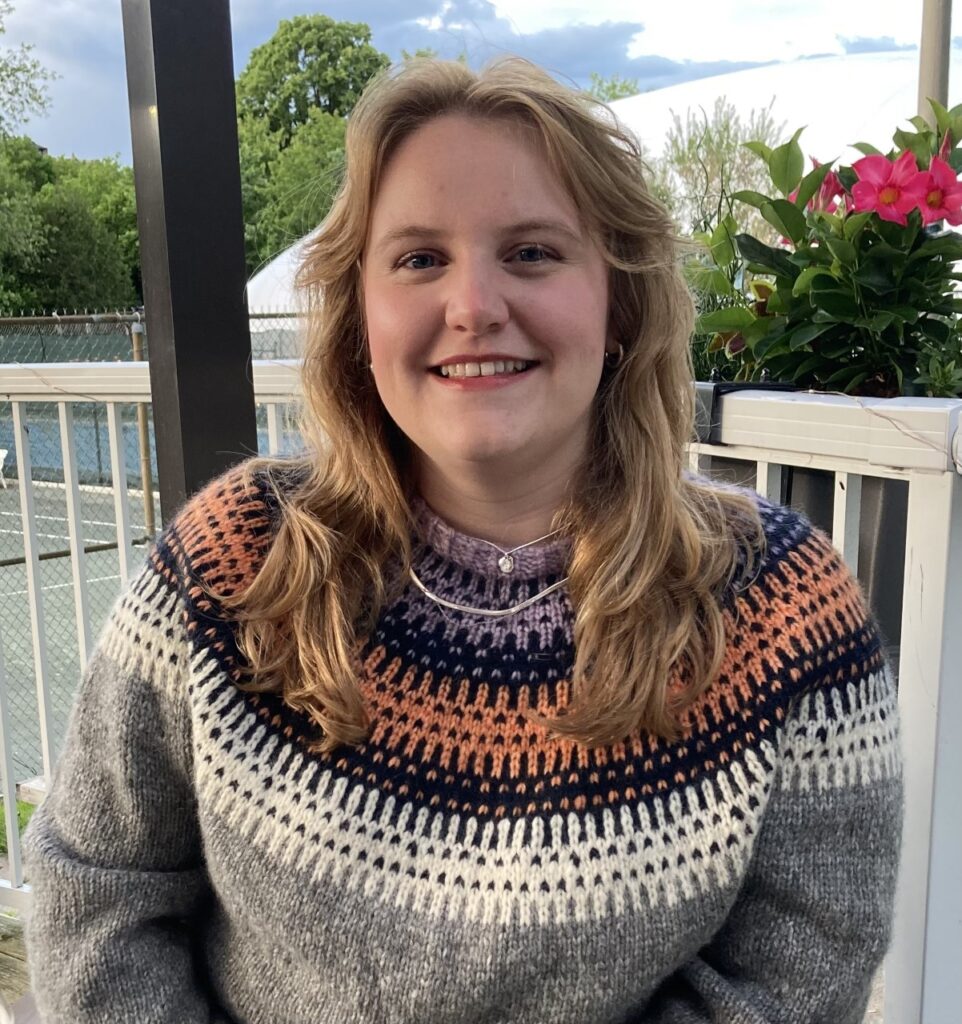
About the Author: Lindsay Trottier is a PhD student in the lab of Dr. Lars Iversen in the Department of Biology at McGill University. Lindsay is interested in all things freshwater. Her current research examines the functional biogeography of aquatic plants at global scale via the Macroecology of Aquatic Plant Functions (MAP) Project.
Iversen Lab: www.lifeinmud.com
MAP Project: www.maptraits.com

0 Comments